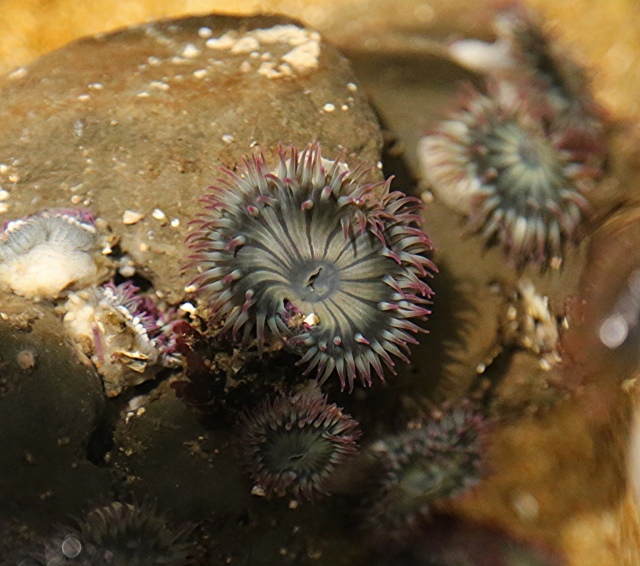TAXONOMY
Kingdom: Animalia
Phylum: Arthropoda
Subphylum: Crustacea
Class: Malacostraca
Order: Decapoda
Infraorder: Caridea
Family: Hippolytidae
Genus/species: Thor amboinensis
GENERAL CHARACTERISTICS: Base body color is drab (olive or brown), with iridescent yellow-white spots bordered by thin white and blue bands, symmetrically arranged over their bodies. The distinctive vertical position and movement of the abdomen earn this shrimp its common name of “sexy.”
Length up to 2 cm. (0.8 inches)

Length up to 2 cm. (0.8 inches)
DISTRIBUTION/HABITAT: Common in tropical seas worldwide. Found in Coral reefs; in association with anemones such as form symbiotic relationships with anemones such as Entacmaea quadricolor, Macrodactyla doreensis, Stichodactyla tapetum, and Zoanthus sp., living on and around their oral discs, tentacles, or substrate very near to anemone bases.

DIET IN THE WILD: Sexy shrimp are carnivorous feeding on matter trapped in a host anemone’s mucus, including plankton. Their diet may also include other small crustaceans, such as brine shrimp and krill. When resources are scarce, shrimp may resort to feeding on the tentacles of their hosts.
REPRODUCTION: These shrimp are protandric hermaprhodites; they are born male and may change into females later in life.
Mating is polygynandrous (promiscuous) T. amboinensis are sexually dimorphic. Males are typically smaller than females and have white spots on their pleopods (appendages). During copulation, a male transfers sperm cells from his gonopores (located on his fifth pereopods) to a female’s gonopores (on her third pereopods).
Females carry, and oxygenate eggs under their forward tail section, on the pleopods. While bearing eggs, they hold their legs under the tail to protect them.

Lifespan ave. 3.5 years
CONSERVATION: IUCN RED LIST Not Evaluated
REMARKS: Sexy shrimp are known to vibrate their abdomen to signal or warn others. They are capable of moving very quickly, at rates of 10-15 cm/s, to escape perceived threats.
They will endure the attacks from the anemones’ nematocysts. Some studies state that a shrimp acclimates to an anemone by collecting its mucus, which camouflages it from the anemone or other studies say that a shrimp acclimates by building up chemicals that inhibit the excretions of nematocysts from anemones.
References
California Academy of Sciences, Steinhart Aquarium, Hidden Reef 2018
Ron’s flickr https://www.flickr.com/photos/cas_docents/3574925860/in/album-72157659465376212/
ADW animaldiversity.org/accounts/Thor_amboinensis/
Ron’s WordPress shortlink http://wp.me/p1DZ4b-1Jv






















